Live on the homepage now!
Reader Supported News
A running tally of the lawmakers who have — and have not — committed to withhold their votes on the bipartisan infrastructure bill in favor of robust budget reconciliation.
The whip count of legislators’ statements on the issue can be viewed here, and this document will be updated to reflect the changing positions of lawmakers.
If there are not enough progressive Democrats willing to oppose an anticipated late-September vote on the bipartisan infrastructure bill and keep the two bills together, then business-aligned Democratic lawmakers could be empowered to pass the infrastructure bill and kill the much larger reconciliation bill that corporate lobbyists are frantically trying to stop.
The progressive strategy, which has been endorsed by House Speaker Nancy Pelosi and President Joe Biden, has been to pair the bipartisan infrastructure bill with the larger reconciliation package — either both pass or neither do. In August, a group led by Rep. Josh Gottheimer, D-N.J., backed by the dark-money group No Labels, successfully split the two packages apart by winning a promise of a vote on the bipartisan bill on September 27. In order to keep the two together, progressives must either complete work on their larger bill by that date, or defeat or stall the bipartisan bill on September 27. Gottheimer was offered a vote, not passage, after all.
Backers of the bipartisan bill say they expect Republican support to be in the low double digits; Rep. Henry Cuellar, D-Texas, pegged it at 10 to 12 in August, though that number may have fallen as Minority Leader Kevin McCarthy and former President Donald Trump have been discouraging Republicans from giving Democrats a win.
The math is straightforward: Democrats have a four-seat majority, so adding 12 Republicans gives a cushion of 16 votes — meaning progressives have just enough committed “no” votes for a razor-thin margin. Dozens of Democrats did not immediately respond to our request for comment, so the figure of 17 may undershoot the count, and this article will be updated as new responses come in. The Congressional Progressive Caucus has previously said that it has the private commitments of a majority of their 95 members for the two-track strategy.
“There are a lot more but not everyone is ready to be public,” said Rep. Pramila Jayapal, D-Wash., chair of the CPC. “We had the majority of our caucus in our previous whip counts and we expect the same now. We will release names later if we have to. But I feel confident of our numbers.”
The reconciliation bill, called the Build Back Better Act, includes trillions of dollars to address poverty and climate change; as well as runaway costs for health care, child care, and education; and raises taxes on the wealthy and corporations. It needs only a simple majority in both the House and the Senate to pass, because the filibuster doesn’t apply to the reconciliation process.
Some conservative Democrats bankrolled by pharmaceutical companies, private equity barons, and fossil fuel giants have been threatening to vote against the reconciliation bill. This is why strategists believe the only way to get their much-needed votes for the package is for other Democrats to withhold enough votes for the infrastructure bill to block its passage unless the reconciliation bill also passes.
Over the weekend, Sen. Joe Manchin, D-W.Va., announced that he intends to vote against the reconciliation bill when it comes to the Senate for a vote. Sen. Bernie Sanders, I-Vt., responded, making his position clear: “No infrastructure bill without the $3.5 trillion reconciliation bill,” he said in a tweet.
The bipartisan infrastructure bill has already passed the Senate. The question now is whether enough Democrats in the House are willing to make their support for the legislation contingent on reconciliation’s passage to block it from passing the House, even with Republican support, without their votes.
The Daily Poster, The Intercept, and The American Prospect reached out to every voting Democrat’s office in the House of Representatives and asked whether they would publicly commit to this strategy. The following representatives said they would: Reps. Jamaal Bowman, Brendan Boyle, Cori Bush, Veronica Escobar, Pramila Jayapal, Mondaire Jones, Ro Khanna, Andy Levin, Alexandria Ocasio-Cortez, Ilhan Omar, Ed Perlmutter, Mark Pocan, Katie Porter, Ayanna Pressley, Jan Schakowsky, Rashida Tlaib, and Bonnie Watson Coleman.
“I am absolutely firm that we are yoking these two bills together,” Levin said at a press event on Monday. He declined to get into “the minutiae of process.”
Similarly, Ocasio-Cortez stated publicly in a livestreaming session, “Nothing would give me more pleasure than to tank a billionaire, dark-money, fossil fuel, Exxon lobbyist-drafted ‘energy’ infrastructure bill if they come after our child care and climate priorities.”
“A Robust Package”
The Congressional Progressive Caucus, of which 95 representatives are members, announced the two-track strategy in an August 10 letter to leadership. According to the letter — signed by Jayapal, Porter, and Omar — a majority of CPC members intend to withhold their votes on the infrastructure bill “until the Senate [adopts] a robust reconciliation package.”
The CPC did not release names at that time. The whip count indicates that some members are as yet unwilling to put their names on the record.
One caveat, which may threaten the entire strategy, is that the CPC has not specified the size of the reconciliation package that will meet the standard of “robustness,” nor any nonnegotiable provisions for the bill. That leaves open the possibility that they might vote for a pared-back reconciliation bill that has been gutted by conservative Democratic legislators.
Some lawmakers have drawn their own lines in the sand. Tlaib, for example, tweeted last week, “$3.5 trillion is the floor.”
Regardless of the size of the bill, the most important line in the sand is whether the two bills stay together.
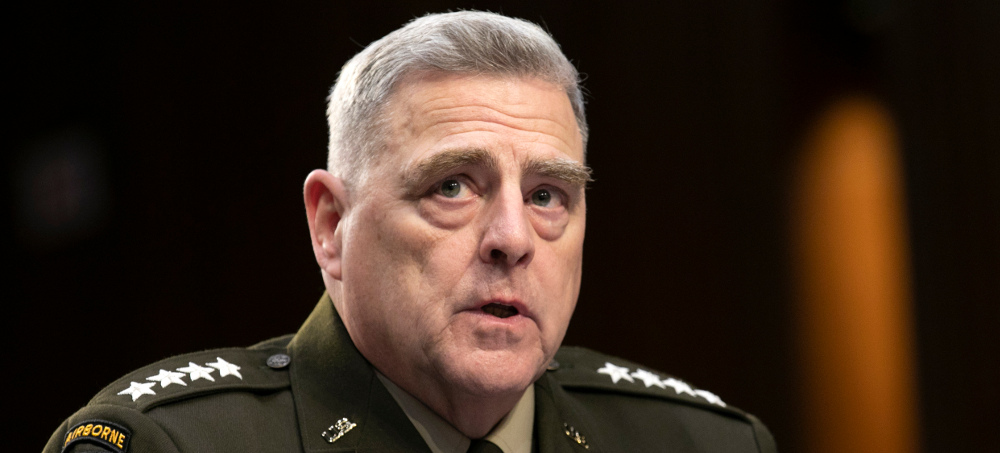 Chairman of the Joints Chief of Staff Mark Milley. (photo: Getty)
Chairman of the Joints Chief of Staff Mark Milley. (photo: Getty)
ALSO SEE: Why Milley Secretly Secured Nuclear Codes,
Called China in Final Days of Trump Presidency
Chairman of the Joint Chiefs of Staff Mark Milley told Gen. Li Zuocheng of the People’s Liberation Army that the United States would not strike. One call took place on Oct. 30, 2020, four days before the election that defeated Trump. The second call was on Jan. 8, 2021, just two days after the insurrection at the U.S. Capitol by supporters of the outgoing chief executive.
Milley went so far as to promise Li that he would warn his counterpart in the event of a U.S. attack, according to the book “Peril,” written by Washington Post journalists Bob Woodward and Robert Costa. The Associated Press obtained a copy of the book. Details from the book, which is set to be released next week, were first reported by The Washington Post on Tuesday.
“General Li, I want to assure you that the American government is stable and everything is going to be okay,” Milley told him in the first call, according to the book. “We are not going to attack or conduct any kinetic operations against you.”
“If we’re going to attack, I’m going to call you ahead of time. It’s not going to be a surprise,” Milley reportedly said.
According to the defense official, Milley’s message to Li on both occasions was one of reassurance. The official questioned suggestions that Milley told Li he would call him first, and instead said the chairman made the point that the United States was not going to suddenly attack China without any warning — whether it be through diplomatic, administrative or military channels.
Milley also spoke with a number of other chiefs of defense around the world in the days after the Jan. 6 riot, including military leaders from the United Kingdom, Russia and Pakistan. A readout of those calls in January referred to “several” other counterparts that he spoke to with similar messages of reassurance that the U.S. government was strong and in control.
Trump, interviewed by phone on Newsmax Tuesday, said Milley’s calls to the Chinese could amount to treason.
“If it is actually true, which is hard to believe, that he would have called China and done these things and was willing to advise them of an attack, or in advance of an attack, that’s treason,” said Trump. “For him to say that I was going to attack China is the most ridiculous thing I’ve ever heard.”
The second call was meant to placate Chinese fears about the events of Jan. 6. But the book reports that Li wasn’t as easily assuaged, even after Milley promised him: “We are 100 percent steady. Everything’s fine. But democracy can be sloppy sometimes.”
Milley believed the president suffered a mental decline after the election, agreeing with a view shared by House Speaker Nancy Pelosi in a phone call they had Jan. 8, according to officials.
Pelosi had previously said she spoke to Milley that day about “available precautions” to prevent Trump from initiating military action or ordering a nuclear launch, and she told colleagues she was given unspecified assurances that there were longstanding safeguards in place.
Milley, according to the book, called the admiral overseeing the U.S. Indo-Pacific Command, the military unit responsible for Asia and the Pacific region, and recommended postponing upcoming military exercises. He also asked senior officers to swear an “oath” that Milley had to be involved if Trump gave an order to launch nuclear weapons, according to the book.
Officials in January and on Tuesday confirmed that Milley spoke with Pelosi, which was made public by the House speaker at the time. The officials said the two talked about the existing, long-held safeguards in the process for a nuclear strike. One official said Tuesday that Milley’s intent in speaking with his staff and commanders about the process was not a move to subvert the president or his power, but to reaffirm the procedures and ensure they were understood by everyone.
It’s not clear what, if any, military exercises were actually postponed. But defense officials said it is more likely that the military postponed a planned operation, such as a freedom of navigation transit by a U.S. Navy ship in the Pacific region. The defense officials spoke on condition of anonymity to discuss private conversations.
Milley was appointed by Trump in 2018 and later drew the president’s wrath when he expressed regret for participating in a June 2020 photo op with Trump after federal law enforcement cleared a park near the White House of peaceful protesters so Trump could stand at a nearby damaged church.
In response to the book, Sen. Marco Rubio, R-Fla., sent President Joe Biden a letter Tuesday urging him to fire Milley, saying the general worked to “actively undermine the sitting Commander in Chief of the United States Armed Forces and contemplated a treasonous leak of classified information to the Chinese Communist Party in advance of a potential armed conflict with the People’s Republic of China (PRC).”
Sen. Dick Durbin, D-Ill., said he had no concerns that Milley might have exceeded his authority, telling reporters that Democratic lawmakers “were circumspect in our language but many of us made it clear that we were counting on him to avoid the disaster which we knew could happen at any moment.”
A spokesperson for the Joint Staff declined to comment.
Milley’s second warning to Beijing came after Trump had fired Secretary of Defense Mike Esper and filled several top positions with interim officeholders loyal to him.
The book also offers new insights into Trump’s efforts to hold on to power despite losing the election to Democrat Biden.
Trump refused to concede and offered false claims that the election had been stolen. He repeatedly pressed his vice president, Mike Pence, to refuse to certify the election results at the Capitol on Jan. 6, the event that was later interrupted by the mob.
Pence, the book writes, called Dan Quayle, a former vice president and fellow Indiana Republican, to see if there was any way he could acquiesce to Trump’s request. Quayle said absolutely not.
“Mike, you have no flexibility on this. None. Zero. Forget it. Put it away,” Quayle said, according to the book.
Pence ultimately agreed. He defied Trump to affirm Joe Biden’s victory.
Trump was not pleased.
“I don’t want to be your friend anymore if you don’t do this,” Trump replied, according to the book, later telling his vice president: “You’ve betrayed us. I made you. You were nothing.”
“Peril” describes Trump’s relentless efforts to convince Attorney General William Barr that the election had been stolen. Barr is quoted as telling Trump, “The Justice Department can’t take sides, as you know, between you and the other candidate.” According to the book, Barr had determined that allegations about rigged voting machines “were not panning out.” Barr also expressed disgust with Rudolph Giuliani and others insisting Trump had won, calling them a “clown car.”
Trump’s office had no immediate comment on the book.
 Alexandria Ocasio-Cortez: 'Imagine if [they were'] addressed with their age and gender? They'd be pretty upset if one responded with 'the old man,' right?' (photo: Drew Angerer/Getty)
Alexandria Ocasio-Cortez: 'Imagine if [they were'] addressed with their age and gender? They'd be pretty upset if one responded with 'the old man,' right?' (photo: Drew Angerer/Getty)
Joe Biden’s economic agenda depends on Democrats’ ability to overcome such internal divisions and enact what would be the largest expansion of the social safety net in generations.
Manchin is among the chief obstacles to passing the mooted $3.5tn package. He has said he would not support legislation with such a high price tag.
His opposition has placed the bill in peril in the Senate, where it already faces an uphill battle in a chamber split 50-50, while drawing the ire of progressives, who see the $3.5tn plan as a compromise on their ambitions to reshape the US economy.
In a Sunday appearance on CNN, Manchin ripped progressives for threatening to sink a bipartisan infrastructure bill if he refuses to support the spending package. Singling out Ocasio-Cortez, Manchin responded to her claim that he meets weekly with oil lobbyists.
“I keep my door open for everybody,” he said. “It’s totally false. And those types of superlatives, it’s just awful. Continue to divide, divide, divide.
“I don’t know that young lady that well. I really don’t. She’s just speculating and saying things.”
On Twitter, Ocasio-Cortez suggested Manchin was attempting to dismiss a fellow member of Congress as a “young lady” because he was beginning to feel the pressure.
“In Washington, I usually know my questions of power are getting somewhere when the powerful stop referring to me as ‘Congresswoman’ and start referring to me as ‘young lady’ instead,” the 31-year-old wrote.
“Imagine if every time someone referred to someone as ‘young lady’ they were responded to by being addressed with their age and gender? They’d be pretty upset if one responded with ‘the old man’, right? Why this kind of weird, patronizing behavior is so accepted is beyond me!”
The testy exchange underscores the challenge facing Democrats as they attempt to craft a bill that satisfies competing interests among their caucus on healthcare, climate change, education and immigration. How Democrats plan to pay for the package also remains contested and unclear.
Last week, Manchin called on Congress to “pause” a lightning-fast drafting process for the spending plan. The Senate majority leader, Chuck Schumer, rejected the call, insisting Democrats were moving “full speed ahead”, though he did not rule out shrinking the cost of the plan.
In the CNN interview, Manchin predicted the final measure would cost closer to $1.5tn. Responding on the network, Senator Bernie Sanders of Vermont, a leading progressive, said shaving $2tn from the overall plan was “absolutely not acceptable to me”, underscoring the challenging terrain facing Democrats in Washington.
The bipartisan bill that passed the Senate in August includes funding for so-called “hard” infrastructure projects like roads and bridges, broadband and mass transit.
Progressives have threatened to derail passage of that $1.2tn plan if Senate Democrats fail to deliver a concurrent spending package that delivers on liberal priorities, including combating climate change, expanding healthcare and medical leave, subsidizing childcare and reforming the immigration system.
The House, where Democrats hold a narrow majority, is expected to pass the bipartisan infrastructure bill by 27 September. Key committees are racing to finish writing the reconciliation package, which under Senate rules can circumvent the filibuster and pass with 50 votes instead of 60.
Senate Democrats would need support from all 50 members of their caucus to approve it via budget reconciliation, with Vice-President Kamala Harris casting the tie-breaking vote.
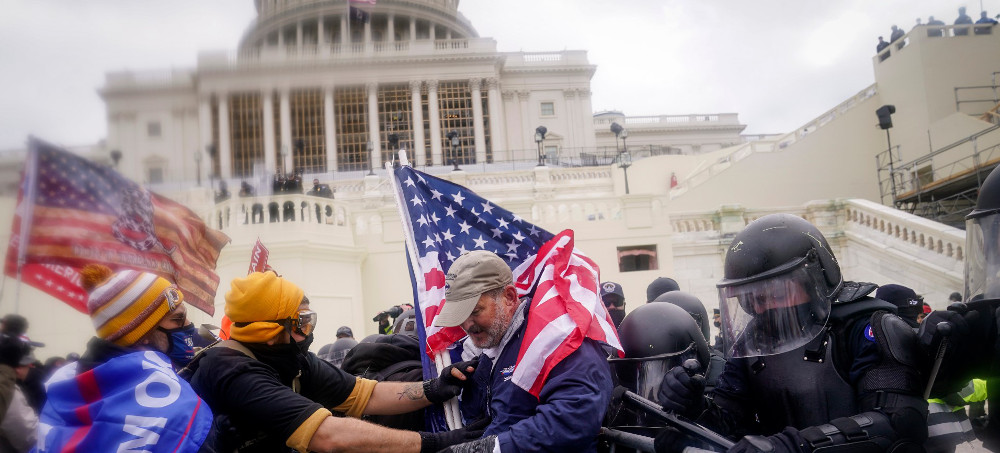 Jan. 6th Capitol riot. (photo: Getty)
Jan. 6th Capitol riot. (photo: Getty)
But the officer never shared that plan with his supervisor, the Capitol Police’s investigations unit or the FBI. It was only when the FBI contacted the Capitol Police about the officer’s photo in Facebook posts they were using to obtain an arrest warrant that the officer filled in his supervisors, according to internal investigation documents obtained by McClatchy.
The officer, whose name is redacted from the documents, is one of six facing disciplinary action related to the Jan. 6 riot when supporters of former President Donald Trump mobbed the Capitol building as lawmakers were certifying the 2020 presidential election results.
Three of the cases recommended for disciplinary action after internal investigations by the Office of Professional Responsibility involved Capitol Police officers who allegedly posed for photographs with rioters, according to the documents.
The law enforcement agency announced Saturday that its Office of Professional Responsibility had recommended disciplinary action against six officers following 38 internal investigations, but did not release details of the investigations.
Many of the cases that were dismissed involved officers who could not be identified by investigators, others that prompted a call for disciplinary action involved photographs and video.
The documents obtained by McClatchy reveal new details about the alleged behavior of a number of officers during the attack on the Capitol.
The FBI alerted the Capitol Police in February of a photograph of an officer posing with a riot suspect as the agency sought an arrest warrant using the suspect’s social media posts.
“The arrest warrants are public so I just wanted to give you a heads up that this is happening so you all aren’t blindsided by it,” the FBI investigator told Capitol Police in an email.
The Capitol Police officer said the suspect appeared to be an “alpha male” leading a group of Trump supporters inside the Capitol, so he approached him. “I specifically took the picture so I can refer to that guy,” the officer told investigators.
But the internal investigation noted that the officer did not use his own phone to take the photo or obtain any of the suspect’s information if that was his goal. “I didn ‘t want to know the guy,” the officer said, according to the documents.
Investigators found the officer had committed “conduct unbecoming,” which is also the accusation against two other officers who allegedly posed for photos.
One of those officers facing disciplinary action was filmed posing for photos with multiple rioters, the investigation found.
He became known as the “selfie officer” and the department received “numerous complaints, via telephone and at least 170 emails received in one day, regarding photographs that appeared in news stories and on a live Twitter video of a USCP officer posing with rioters after the Capitol Building was Breached,” one of the investigation documents stated.
The officer told investigators he was seeking to defuse the situation.
“I can’t help what they do. If you want to take a photo, I’m not going to say no because we are always told to interact and keep the situation calm,” he said, according to the documents.
But investigators determined that even if the officer thought he was calming the situation, “his actions were inappropriate under the circumstances, and reflected negatively upon himself as a representative of the Department.”
Another officer who allegedly posed for a photo testified that he did not remember and pointed to the trauma of the day.
“I had people coming up to me and videoing me all day long. Pictures and videos of officers all day long. So, I mean, there was a lot going on that day,” the officer said, according to the documents. “This is after being CS sprayed, OC sprayed, fighting with protesters all day ... Plus that, that’s a traumatic life event.”
Capitol Police said Saturday that it shared the investigation documents with the Department of Justice as part of its discovery process. The DOJ did not immediately comment on their contents Tuesday.
Asked about the officers posing for photographs, the Capitol Police pointed to its comment from Saturday.
“The Department is committed to accountability when officers fail to meet the standards governed by USCP policies and the Congressional Community’s expectations,” the statement said. “The six sustained cases should not diminish the heroic efforts of the United States Capitol Police officers.”
In addition to the cases of unbecoming conduct, a special agent in the department’s Protective Services Bureau faces disciplinary action on an allegation of improper dissemination of information
The allegation stems from a conversation the officer had with a friend the week after the riot in which he allegedly revealed information about the secure location he helped evacuate lawmakers to during the riot.
The friend, who is referred to as “ANONYMOUS” in the documents, called the FBI tip line to report the conversation and expressed concerns that the agent subscribed to Trump’s election conspiracy theories.
“I don’t want to report a friend of forty years but he’s says enough concerning statements that I feel like I need to do this... he’s just fallen into this cult and these beliefs,” the documents quote the anonymous friend as saying in a subsequent interview with Capitol Police.
The agent denied that he was sympathetic to the cause of the rioters, but he acknowledged that he may have inadvertently shared information about the secure location.
“I can’t say one hundred percent that I didn’t do what you’re telling me I did,” the agent told investigators.
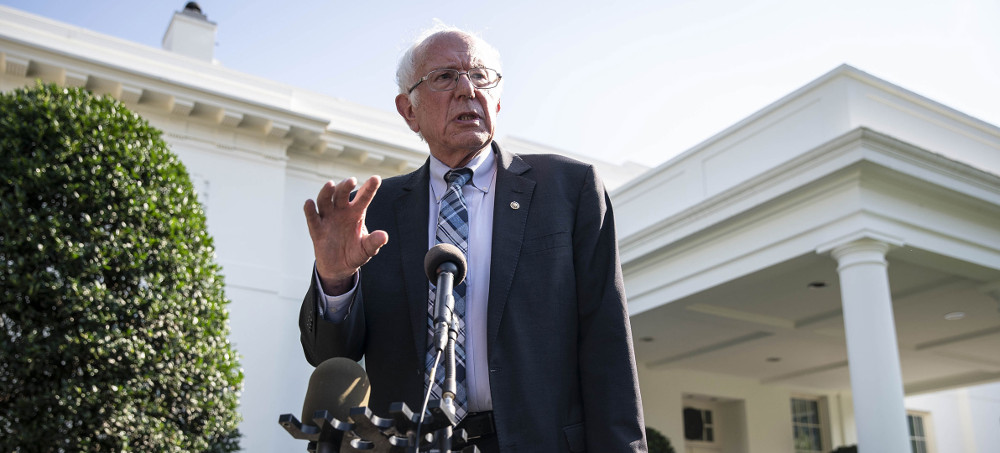 Sen. Bernie Sanders. (photo: Sarah Silbiger/Getty)
Sen. Bernie Sanders. (photo: Sarah Silbiger/Getty)
"In terms of the voucher, what we want to do is make sure that people understand the significance," the Vermont independent told Insider. "So as a bridge, I think what we're looking at is here's $1,000 right away, use that to go to a dentist if you cannot afford to go. That's very temporary, but maybe a bridge for a year."
Senate Democrats are seeking to expand Medicare so it covers dental, vision, and hearing benefits in their party-line social spending package. Widening the reach of the federal health insurance program is a top priority for Sanders as chair of the Senate Budget Committee and it has backing from Senate Majority Leader Chuck Schumer.
House Democrats introduced legislation for Medicare to gradually initiate vision coverage next year, hearing in 2023, with dental covered in 2028. But Sanders has said he favors a faster timeline for dental coverage.
The measure emphasizes the challenges that Democrats face as they attempt to provide tangible benefits to Americans in a social spending package that's still taking shape - for seniors in particular ahead of next year's midterms. Americans over age 65 generally vote at higher rates, making seniors a key voting bloc during presidential elections and more so in midterm races.
Sen. Ron Wyden of Oregon, chair of the Senate Finance Committee, told Insider he'd been discussing the idea with Sanders. "I'm talking with Senator Sanders about the best way to get this up and running efficiently as quickly as possible," he said.
The Oregon Democrat drew a parallel with the Affordable Care Act a decade ago - President Barack Obama's signature health law - saying the four-year "delay" setting it up after it was made law contributed to an "understandable skepticism people have about government."
Other Senate Democrats also want to implement the programs sooner rather than later. "I think we should try to get it stood up as fast as we could," Sen. Bob Casey of Pennsylvania told Insider. "I'm not saying we could do it in a matter of months, but I think you can do it a lot faster than a couple of years."
But experts say it could take years for Medicare to design and implement new programs. Medicare was last expanded in 2003 under President George W. Bush to cover prescription drugs, and it started providing coverage three years later.
For dentists, who largely don't form part of federal health programs, the process would include setting reimbursement rates and signing up enough dental providers to cover tens of millions of Americans. Tricia Neuman, executive director of Medicare policy at the Kaiser Family Foundation, recently told Insider it could take years for the federal government to "successfully" implement a new dental benefit.
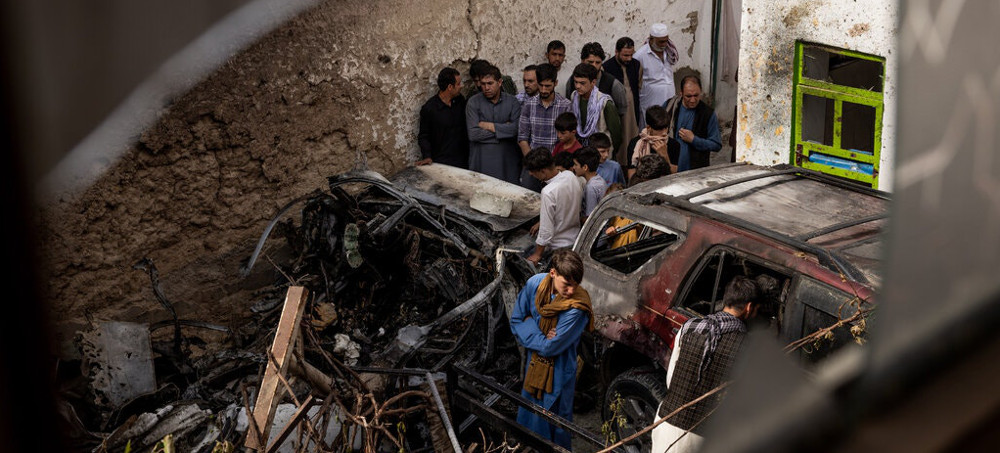 Relatives and neighbors inspect damage in the cramped courtyard of a house in Kabul from what they said was a U.S. drone strike Sunday. (photo: Jim Huylebroek/The New York Times)
Relatives and neighbors inspect damage in the cramped courtyard of a house in Kabul from what they said was a U.S. drone strike Sunday. (photo: Jim Huylebroek/The New York Times)
We speak with reporter Matthieu Aikins about how his investigation for The New York Times found an August 29 U.S. drone strike, which the Pentagon claimed targeted a facilitator with the militant group ISIS-K, actually killed 10 Afghan civilians, including seven children and Zemari Ahmadi, an Afghan engineer who had worked since 2006 for an American aid group. A review of video evidence by the Times shows Zemari loading canisters of water at the charity’s office, after the Pentagon claimed surveillance video showed Zemari loading what they thought were explosives into a car at an unknown compound earlier in the day. “We put together evidence that showed that what the military interpreted as a series of suspicious moves from the sky was, according to his co-workers and colleagues and video evidence, just an ordinary day for this aid worker,” says Aikins.
We turn now to Afghanistan. It’s been one month since the Taliban seized control of Kabul after Afghan President Ashraf Ghani fled the country. On Tuesday, U.S. Secretary of State Tony Blinken defended the U.S. withdrawal from Afghanistan during a second day of questioning on Capitol Hill. Blinken was grilled about a U.S. drone strike in Kabul on August 29th. It’s the last drone strike before the withdrawal. The Pentagon claimed the strike targeted a facilitator with the militant group ISIS-K who was preparing to attack the Kabul airport. But local residents said the strike killed 10 Afghan civilians, including seven children and Zemari Ahmadi — not an ISIS-K operative, but an Afghan engineer who had worked since 2006 for the California-based charity group Nutrition and Education International. The Pentagon claims surveillance video showed Zemari loading what they thought were explosives into a car at an unknown compound earlier in the day. But video evidence obtained by The New York Times found Zemari was actually loading canisters of water at the charity’s office to deliver to those in need. The Pentagon has described the drone attack as a “righteous” strike. But on Tuesday, Secretary of State Blinken acknowledged the U.S. is not certain who was targeted, when questioned by Republican Senator Rand Paul.
SEN. RAND PAUL: The guy the Biden administration droned, was he an aid worker or an ISIS-K operative?
SECRETARY OF STATE ANTONY BLINKEN: The administration is, of course, reviewing that — that strike, and I’m sure that a, you know, full assessment will be — will be forthcoming.
SEN. RAND PAUL: So you don’t know if it was an aid worker or an ISIS-K operative?
SECRETARY OF STATE ANTONY BLINKEN: I can’t speak to that. And I can’t speak to that in this setting, in any event.
SEN. RAND PAUL: So, you don’t know or won’t tell us?
SECRETARY OF STATE ANTONY BLINKEN: I don’t — I don’t know, because we’re reviewing it.
SEN. RAND PAUL: Well, see, you’d think that you’d kind of know, before you off somebody with a Predator drone, whether he’s an aid worker or he’s an ISIS-K. See, the thing is, is this isn’t just you. It’s been going on for administration after administration.
AMY GOODMAN: We go now to Kabul, Afghanistan, where we’re joined by Matthieu Aikins of The New York Times. He wrote the recent piece headlined “In U.S. Drone Strike, Evidence Suggests No ISIS Bomb.”
Matthieu, talk about going to the site, to the family’s home, where the car was, and describe what you learned happened that day, August 29th.
MATTHIEU AIKINS: Well, August 29th, there was the strike in the evening. And we went the next morning, myself and a photographer for the Times, Jim Huylebroek, and we arrived at the scene. It was inside a courtyard of a house, where a car had been hit. And there was a small crater, still flesh and blood spattered around the interior of the courtyard. And we spoke to the family who lived there, and they were extremely distraught, because they had just lost 10 members of the family, including seven children. So, it was immediately apparent that there had been civilian casualties in the strike. And then, you know, when we followed up with our investigation over the past two weeks, we put together evidence that showed that this — what the military interpreted as a series of suspicious moves from the sky was, according to his co-workers and colleagues and video evidence, just an ordinary day for this aid worker.
JUAN GONZÁLEZ: And, Matthieu, the continued stonewalling, effectively, of the government in terms of what they have found out since is really remarkable. I’m just wondering — basic stuff like how many people died. And there’s a big difference between 10 and the official count that the U.S. is still saying of three civilians. They haven’t quite explained why they claimed Mr. Ahmadi was driving into an unknown compound at one point, which actually was the aid agency’s headquarters in Kabul. And also, they’re not even making clear whether they’ve checked if he was an employee of this U.S.-based aid group. What do you make of this continued almost refusal to explain the results of what they’ve investigated so far?
MATTHIEU AIKINS: Well, certainly, they have a lot to answer for, a lot to explain. But they are conducting an investigation, and typically when the military does this sort of investigation, you do have to wait for the results. They’re going to be classified, but they’ll probably brief them to lawmakers and then eventually release a redacted version of the investigation. So, at this point, I don’t think we’re going to hear anything, at least not officially, until that’s completed.
AMY GOODMAN: On September 1st, the chair of the Joint Chiefs of Staff, General Mark Milley, described the drone attack as a “righteous” strike.
GEN. MARK MILLEY: We know that there were secondary explosions. Because there were secondary explosions, there is a reasonable conclusion to be made that there was explosives in that vehicle. The third thing is, we know from a variety of other means that at least one of those people that were killed was an ISIS facilitator. So, were there others killed? Yes, there are others killed. Who they are, we don’t know. We’ll try to sort through all that. But we believe that the procedures, at this point — I don’t want to influence the outcome of an investigation — but, at this point, we think that the procedures were correctly followed and it was a righteous strike.
AMY GOODMAN: So, that’s General Mark Milley. Evidence examined by The New York Times at the scene of the drone strike suggests there was not a second explosion.
NARRATOR: We gathered photos and videos of the scene taken by journalists and visited the courtyard multiple times. We shared the evidence with three weapons experts, who said the damage was consistent with the impact of a Hellfire missile. They pointed to the small crater beneath Ahmadi’s car, and the damage from the metal fragments of a warhead. This plastic melted as a result of a car fire triggered by the missile strike.
All three experts also pointed out what was missing: any evidence of the large secondary explosions described by the Pentagon — no collapsed or blown-out walls, including next to the trunk with the alleged explosives; no sign that a second car parked in the courtyard was overturned by a large blast; no destroyed vegetation. All of this matches what eyewitnesses told us, that a single missile exploded and triggered a large fire.
AMY GOODMAN: So, that’s The New York Times video report based on Matthieu Aikins’ investigation of the U.S. drone strike. So, if you could elaborate on that, Matthieu, and also talk about why the children, why there were seven children in Zemari’s car?
MATTHIEU AIKINS: Sure. Well, the investigation was definitely a team effort. And we had experts look at the photos and videos that we were able to collect from the scene. And that was really the military’s justification, from what we’ve learned at least thus far, for taking the strike, you know, that this was an imminent threat to the airport, because they took the shot inside a crowded residential neighborhood, where there was a very high likelihood of civilian casualties. You know, that’s a kind of assumption that I think would have been fair in that circumstance. So, really, the way they would have justified this was that this was a car bomb or some kind of imminent threat. And I think it’s pretty conclusive that there was not a larger explosive in this car.
Now, what happened was, is that Zemari’s family, you know, the kids — he lived with his three brothers, so there was a lot of kids in this house. And when he came home every day from work, as I was told by his brother, you know, he’d pull up, and the kids would run out, and they’d be excited to see him. And they’d get in the car, and, you know, usually one of them would sit behind the wheel, maybe on his lap, and they would back the car in the courtyard. So, that’s what they said happened that day, so those kids were in the car when it was struck by a Hellfire missile. And that is the reason why seven of them were killed.
JUAN GONZÁLEZ: And, Matthieu, what does this — from your reporting in Afghanistan, what does this tell us about the limitations of these drone strikes, the inherent problems that exist when you rely, essentially, on aerial surveillance to determine who you strike, or not, versus on-the-ground, real human intelligence?
MATTHIEU AIKINS: Yeah. So, this is not an isolated incident. You know, we’ve had civilian casualties from drone strikes many times over the years. But the fact of the matter was, this happened in Kabul. You know, I was able to go to the scene, and we were able to do the story in two weeks. Normally these happen in remote, dangerous areas, difficult to access. So, often all we have is the military’s official version of the events — in this case, that this guy was an ISIS facilitator and that there was explosives in the car.
So, the danger with these strikes, which — again, this may have been the last drone strike of the 20-year American war, but the war on terror continues, and there’s going to be more drone strikes, you know, as promised by the administration, in an over-the-horizon role in places like Afghanistan. The danger is that we’re going to have more of these incidents, there’s going to be more children killed, but that we’re not going to really even know about it, because, again, we’re not going to have access to what’s happening on the ground.
AMY GOODMAN: And, of course, these drone strikes lessen the chance of U.S. soldiers being killed, as they fly over from another country, as you said, the over-the-horizon capability they’re talking about. But I wanted to go to one last video that you obtained, security camera footage from the office of the U.S.-based aid group Nutrition and Education International, where Zemari Ahmadi had worked earlier in the day.
NARRATOR: At 2:35 p.m., Ahmadi pulls out a hose. And then he and a co-worker fill empty containers with water. Earlier that morning, we saw Ahmadi bring these same empty plastic containers to the office. There was a water shortage in his neighborhood, his family said, so he regularly brought water home from the office.
AMY GOODMAN: So, we’re looking at this closed-circuit footage of him gathering this water to bring home. The U.S. apparently was monitoring him for hours that day, Matthieu.
MATTHIEU AIKINS: Yeah, they said that they were surveilling him with an MQ-9 Reaper drone. But, again, you know, what they see from the sky and what’s happening on the ground are not necessarily the same thing. And in this case, you know, this was a man who had loaded water in the car to bring home to his family.
AMY GOODMAN: Well, Matthieu, we want to thank you so much for being with us. Matthieu Aikins, Kabul-based contributing writer to The New York Times and The New York Times Magazine, his investigation into the drone strike headlined “In U.S. Drone Strike, Evidence Suggests No ISIS Bomb.”
 This July 16, 2004, file photo, shows a gray wolf at the Wildlife Science Center in Forest Lake, Minnesota. (photo: Dawn Villella/AP)
This July 16, 2004, file photo, shows a gray wolf at the Wildlife Science Center in Forest Lake, Minnesota. (photo: Dawn Villella/AP)
Groups representing the tribes sent a letter to Interior Secretary Deb Haaland asking her to act quickly on an emergency petition they filed in May to relist the wolf as endangered or threatened. They also asked Haaland, a member of Laguna Pueblo in New Mexico and the first Native American to lead a Cabinet agency, to relist the wolf on an emergency basis for 240 days, ensuring immediate protection.
The groups say that states have enacted “anti-wolf” policies that present “a real potential of decimating wolf populations.”
The letter doesn’t name any specific states or polices. But Izzy Baird, a spokeswoman for Relist Wolves Coalition, which has been working with tribal nations on the issue, noted in an email that Wisconsin hunters went over their kill quota of 119 by almost 100 animals during that state’s spring season; Montana allows hunters to kill up to 10 wolves each and allows private payments for dead wolves reminiscent of bounties; and that an Idaho law passed in July allows hunters to kill up to 90 percent of that state’s wolves.
The letter notes that wolves play a key role in a host of American Indian tribes’ cultures and accuses the federal government of failing to listen to their concerns about removing the wolf from the endangered species list in January.
“Had either the Trump or Biden Administrations consulted tribal nations, as treaty and trust responsibilities require, they would have heard that as a sacred creature, the wolf is an integral part of the land-based identity that shapes our communities, beliefs, customs and traditions,” the letter said. “The land, and all that it contains, is our temple.”
Wolves across most of the contiguous United States were stripped of federal Endangered Species Act protections in the final days of the Trump administration. Wolves in the Northern Rockies region — including Idaho, Montana and Wyoming and portions of Washington state, Oregon and Utah – lost protections a decade ago under former President Barack Obama.
The groups include the Affiliated Tribes of Northwest Indians, the Association on American Indian Affairs, the Navajo Nation, the Oneida Nation of Wisconsin, the Rocky Mountain Tribal Leaders Council, the Native Justice Coalition, the Great Plains Tribal Chairman’s Association and the Inter Tribal Council of Arizona.
Department of the Interior spokesman Tyler Cherry declined comment on the letter.
Follow us on facebook and twitter!
PO Box 2043 / Citrus Heights, CA 95611

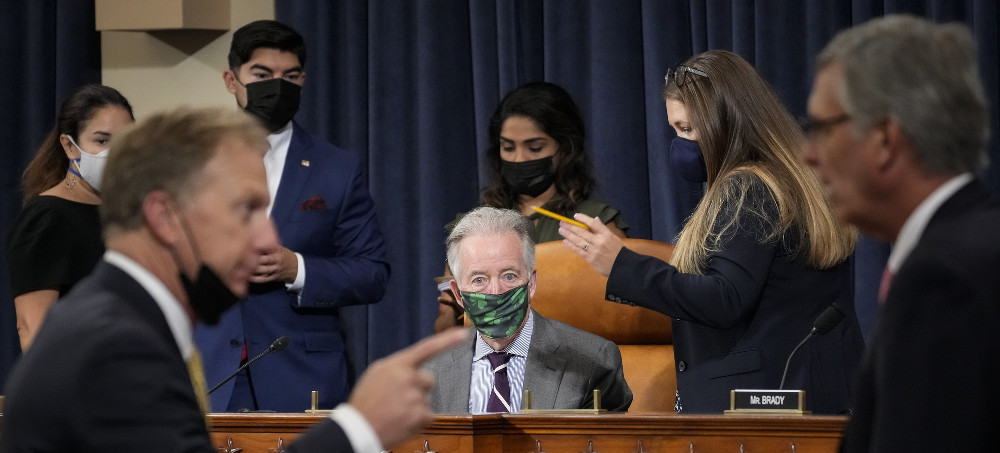

No comments:
Post a Comment